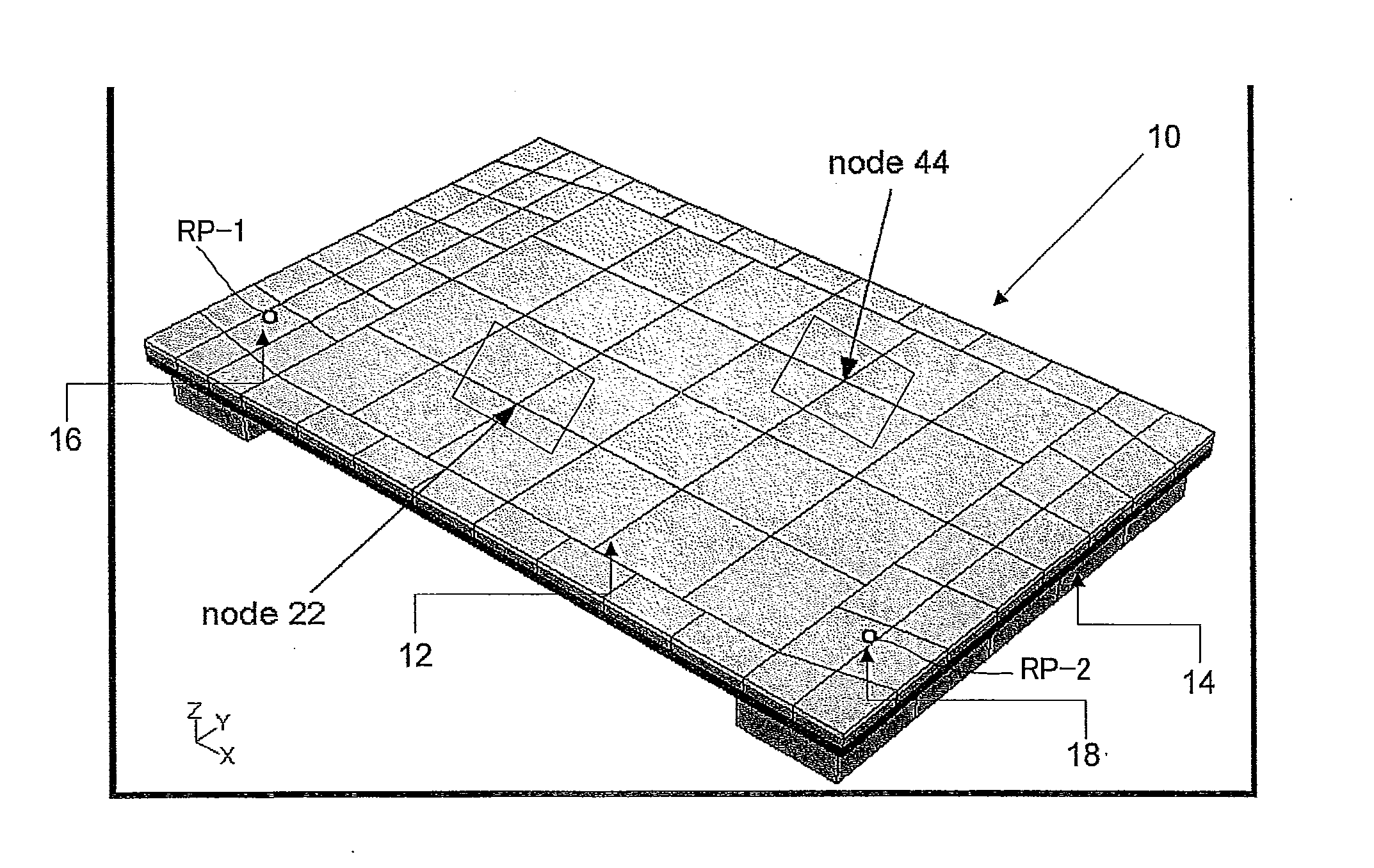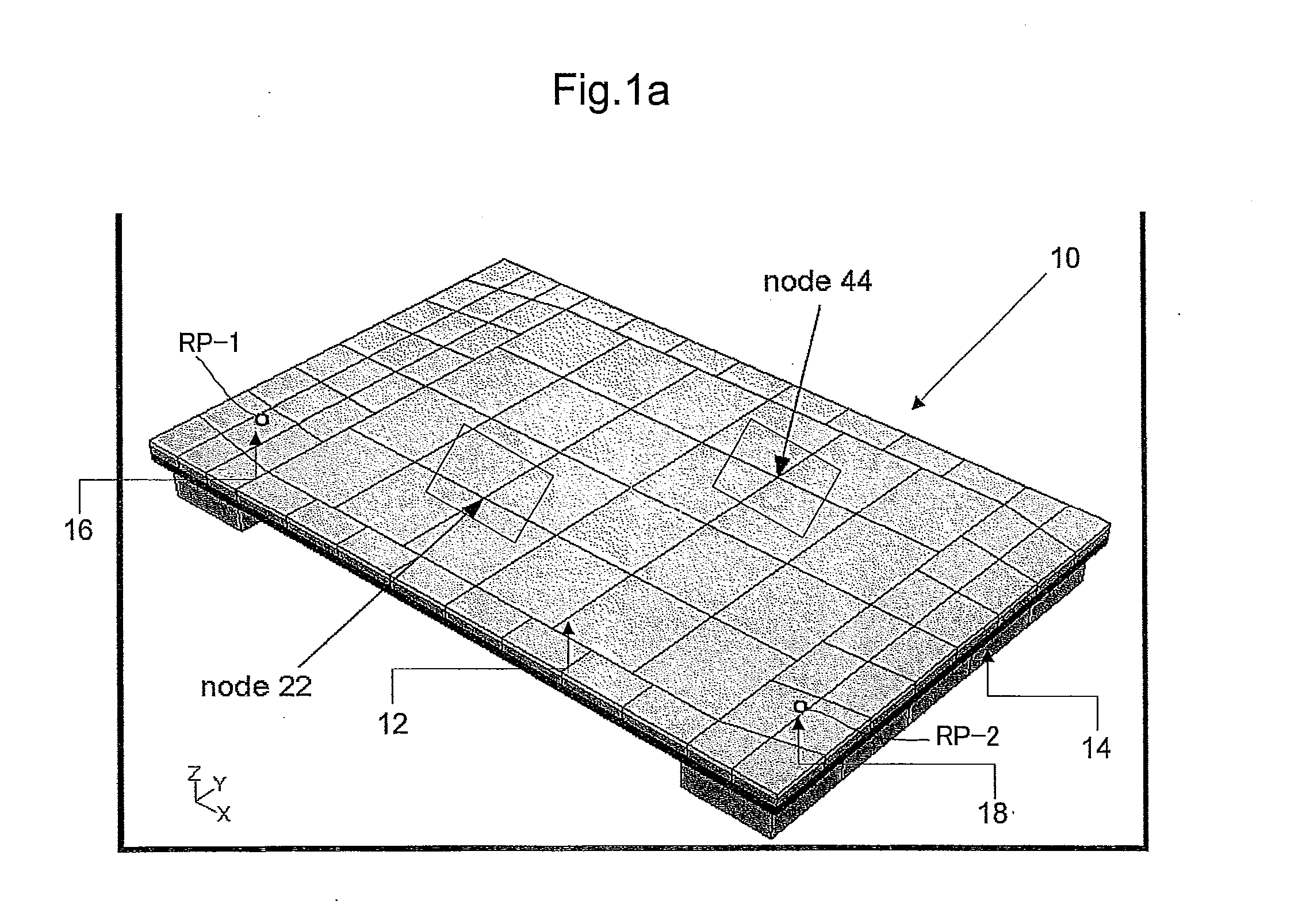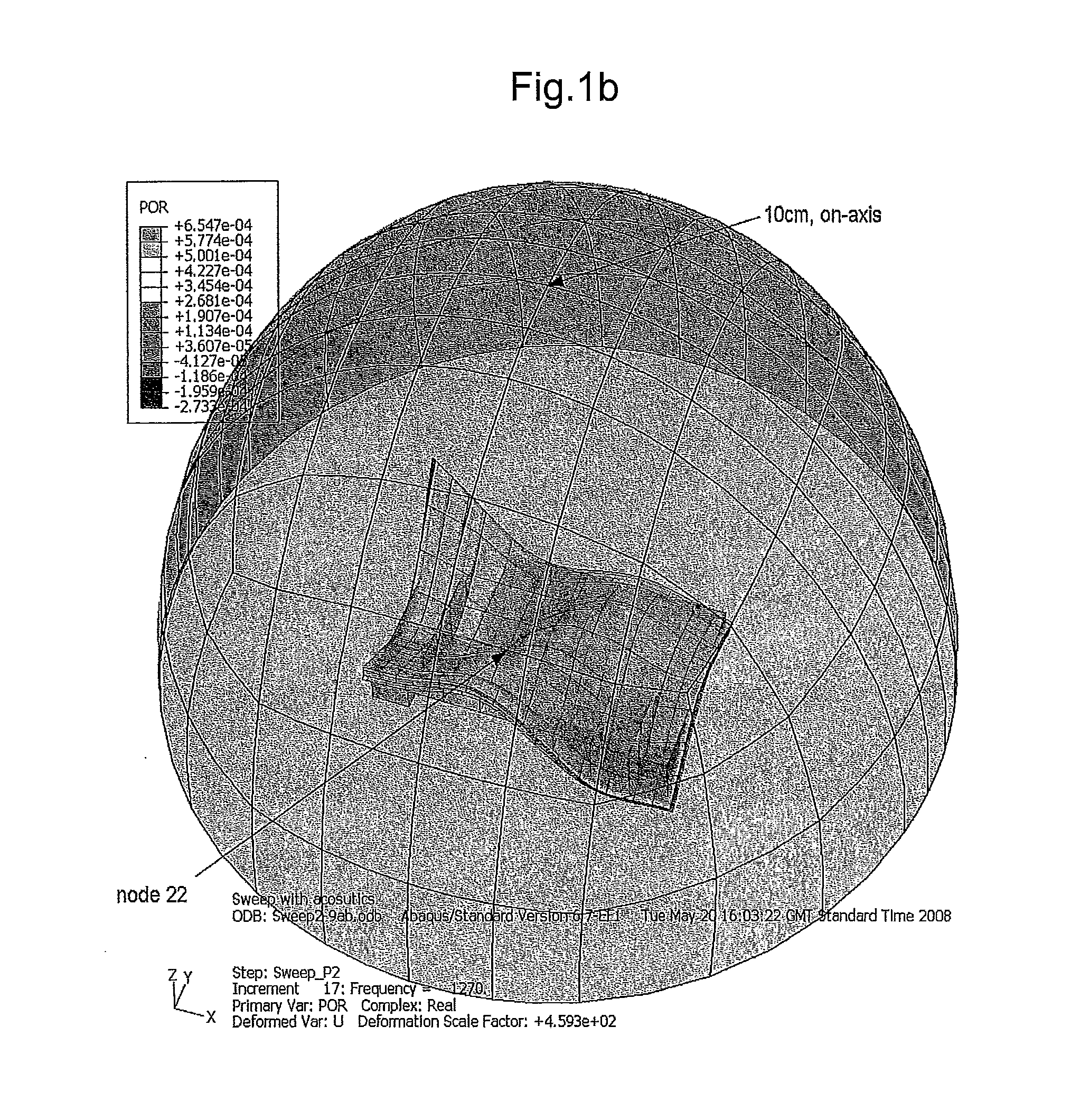Touch Sensitive Device
- Summary
- Abstract
- Description
- Claims
- Application Information
AI Technical Summary
Benefits of technology
Problems solved by technology
Method used
Image
Examples
example 1
m=3, n=2
[0153]Output 1 transfer admittances: P1—1=0.472+0.00344j Output 2 transfer admittances: P1—2=−0.206−0.195j
Output 1 transfer admittances: P2—1=0.479−0.129j
Output 2 transfer admittances: P2—2=0.262+0.000274j
Output 1 transfer admittance: P3—1=−0.067−0.180j
Output 2 transfer admittance: P3—2=0.264+0.0014j
All at Once
[0154]M1+M2= (0.3030.171-0.012j-0.087-0.034j0.171+0.012j0.3150.061-0.095j-0.087+0.034j0.061+0.095j0.107);M1+M2=0
M1+M2: eigenvalues are 0, 0.218 and 0.506:
Eigenvector after scaling: (0.434−0.011j, −0.418+0.199j, 0.764+0.115j)
One at a Time
[0155]Solve output 1, and then output 2. As 3>2 we should get the same answer.
M1=(0.2230.226-0.063j-0.032-0.085j0.226+0.063j0.246-0.009-0.095j-0.032+0.085j-0.009+0.095j0.037);M1=0
M1: eigenvalues are 0, 0 and 0.506:
Eigenvector V1: (0.748, −0.596−0.165j, 0.085−0.224j)
Eigenvector V2: (−0.062+0.026j, 0.096+0.350j, 0.929)
[0156]New problem; select a and b such that a·V1+b·V2 minimises output 2.
New transfer admittances are;[0157]pv1=(P1_2 P2_2...
example 2
m=3, n>=3
[0163]Here we have 1 acoustic pressure output and a number of velocity outputs.
[0164]Acoustic scaled error matrix is M1, summed velocity scaled error matrix is M2.
M1=(3.928-2.667+2.473j-2.674+2.506j-2.667-2.473j3.3673.393-0.018j-2.674-2.506j3.393+0.018j3.418);M1=0M2=(1.0230.602-0.112j-0.528+0.409j0.602+0.112j0.977-1.144+0.205j-0.528-0.409j-1.144-0.205j5.473);M2=2.510
All at Once
[0165]All n output error matrices are summed and the eigenvector corresponding to the lowest eigenvalue is found.
Eigenvalues(M1+M2)=1.146, 3.869, 13.173
Solution=(0.739−0.235j, 0.483+0.306j, 0.246+0.104j)
One at a Time
[0166]Actually, we solve just the acoustics problem, then do the rest all at once. That way, the acoustics problem is solved exactly.
Eigenvalues(M1)=0, 0, 10.714
V1=(0.770−0.199j, 0.376+0.202j, 0.377+0.206j)
V2=(0.097−0.071j, 0.765+0.010j, −0.632+0.0016j)
[0167]As V1 and V2 both correspond to a zero eigenvalue, a·V1+b·V2 is also an eigenvector corresponding to a zero eigenvalue—i.e. it is an ...
PUM
 Login to View More
Login to View More Abstract
Description
Claims
Application Information
 Login to View More
Login to View More - R&D
- Intellectual Property
- Life Sciences
- Materials
- Tech Scout
- Unparalleled Data Quality
- Higher Quality Content
- 60% Fewer Hallucinations
Browse by: Latest US Patents, China's latest patents, Technical Efficacy Thesaurus, Application Domain, Technology Topic, Popular Technical Reports.
© 2025 PatSnap. All rights reserved.Legal|Privacy policy|Modern Slavery Act Transparency Statement|Sitemap|About US| Contact US: help@patsnap.com



